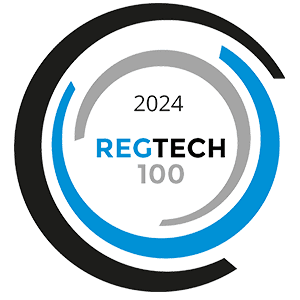You’ve heard it a lot…2020 was challenging.
Many of us were working in new ways, using new platforms, or building new processes. Some of us moved from corporate offices with bustling teams to working from home and relying on Zoom for all of our human interaction needs.
In this type of environment, it’s easy to become overwhelmed or to allow certain areas of responsibility to fall by the wayside. Many financial advisors are receiving additional communication from stressed clients. They are working hard to keep up with the day-to-day monitoring of the markets and communicating with clients.
However, no matter how busy you have become or how out-of-the-ordinary your work experience is, you still have a responsibility to your firm to keep your compliance efforts in tip-top shape. And the regulators will not accept “#2020” as an excuse or a reason why diligent compliance standards were not enforced.
When your regulator comes to call (literally and figuratively, since many examinations are currently being conducted by phone), they’ll be looking for a number of things to ensure your safety and soundness. You can get a head start on ensuring your compliance house is in order by reviewing the top issues outlined in a recent SEC risk alert.
1. Inadequate Resources.
If you’ve felt overwhelmed and over-stressed because you feel understaffed, there’s good news and bad news.
The good news is – you’re not the only one who feels that way. Many firms are feeling the pinch when it comes to their compliance professionals having enough bandwidth.
The bad news is – it’s still an area where you might be written up. Your compliance professionals should have resources available to them, like technology tools and training, so that they can do their jobs well. And, their responsibilities should be streamlined enough that they can dedicate meaningful time to their work.
What To Do About It:
Take time to evaluate where your compliance staff is in comparison to the way your organization has grown. What percentage of headcount, budget, and training resources are being allocated for their development and work efforts?
2. Insufficient Authority for CCOs.
CCOs deserve a seat at the table. And their organizations benefit when they have one. There’s a strategic advantage that comes with having compliance’s input during the planning and development portion of the process.
The SEC notes when large-scale decisions are being made within organizations and compliance isn’t included in the process.
What To Do About It:
Cultivate relationships throughout your organization, so people understand the importance of consulting with compliance and think to bring compliance into discussions earlier, instead of saving compliance discussions as a final hurdle to jump before a launch/implementation.
3. Annual Review Deficiencies.
Annual reviews should be completed to ensure the firm is performing well and complying well. It’s critical to ensure these reviews are conducted, documented, and maintained.
Many firms complete a review or do lessons learned on projects but then fail to complete documentation of their efforts. Without the documentation, examiners cannot see what’s been done or how diligent your team has been in managing this responsibility.
What To Do About It:
Ensure a thorough annual and consistent annual review is completed to analyze risk and that those efforts are documented. If the firm has grown or added new resources (like new technology, etc.), incorporate those updates into the areas you need to review.
4. Lack of Implementation.
Along with your annual review, you need to take time to implement the requirements included in your written policies and procedures.
For example, if you state that every employee with a certain set of responsibilities will have a certain level of training, certification, or security access, you need to make that happen.
If you have guidelines around your advertising compliance process, you need to ensure your process will hold up to scrutiny. Ensure employees follow guidelines, maintain a single source of truth for their disclosure text, and thoroughly document their processes to ensure they’re 100% books and records compliance.
What To Do About It:
Don’t rely on yourself or your team alone to manage every aspect of implementation. Instead, get support to ensure you have the tools and resources you need.
Technology can be a great boon in this area (regulators generally expect firms to use technology for managing compliance), as can working with a consultant to determine where you might have gaps in your processes and need to move forward.
5. Lack of Maintenance for Written Compliance Policy.
An up-to-date written compliance policy should be a given for any firm, yet it’s one of the most frequent citations issued by regulators.
The issue isn’t always that firms have nothing in place. It’s fairly easy to purchase a template version of a written compliance policy, even if you’re a small firm. The issue is that once the policies are purchased, firms tend to leave them collecting dust.
What To Do About It:
These policies need to be customized for the firm, then need to be reviewed and edited on at least an annual basis.
Finally, the firm’s reviewers need to document any changes made, the reasoning behind the change, and the date it was completed. The regulators need to see a trail showing the written compliance policy has been taken seriously and is an active, living document for your firm/organization.
Regardless of the adviser’s size, maintaining, implementing, updating, and enforcing written supervisory procedures is expected and required by law. If you’re interested in more information on the recently issued compliance risk alert, you can access it on the SEC’s website.








